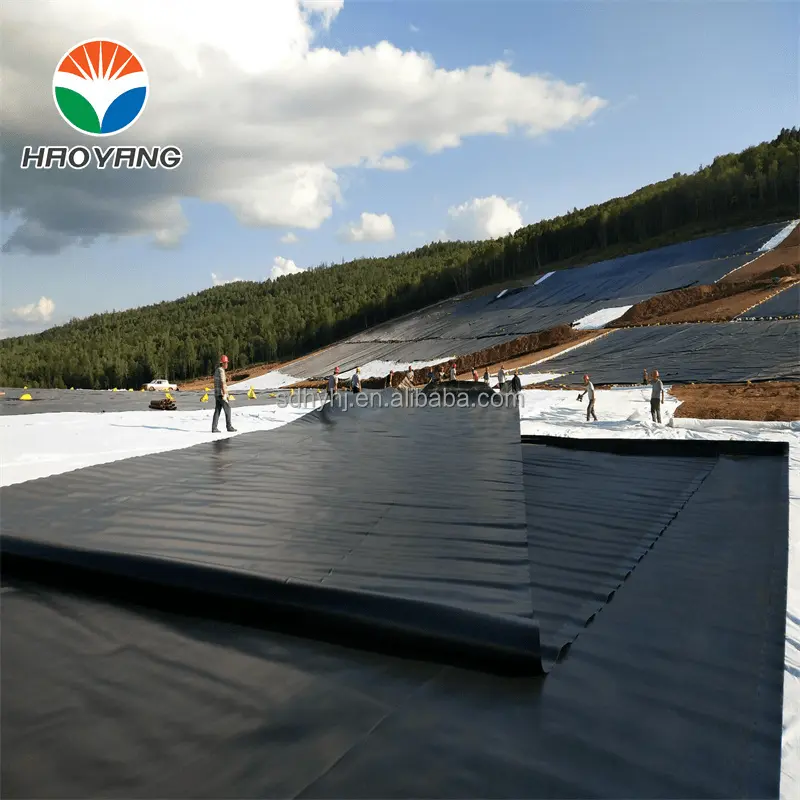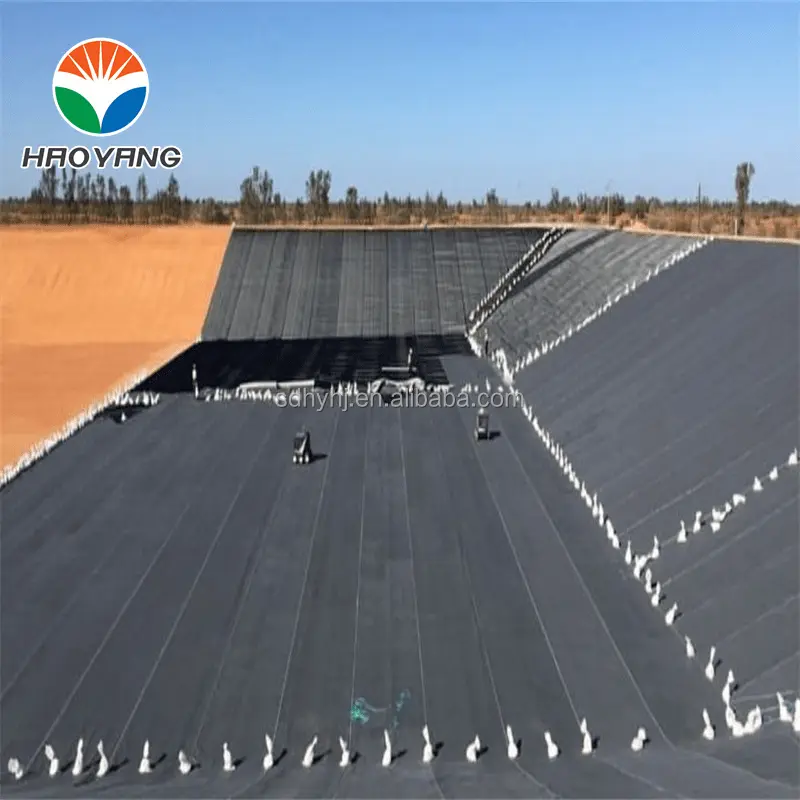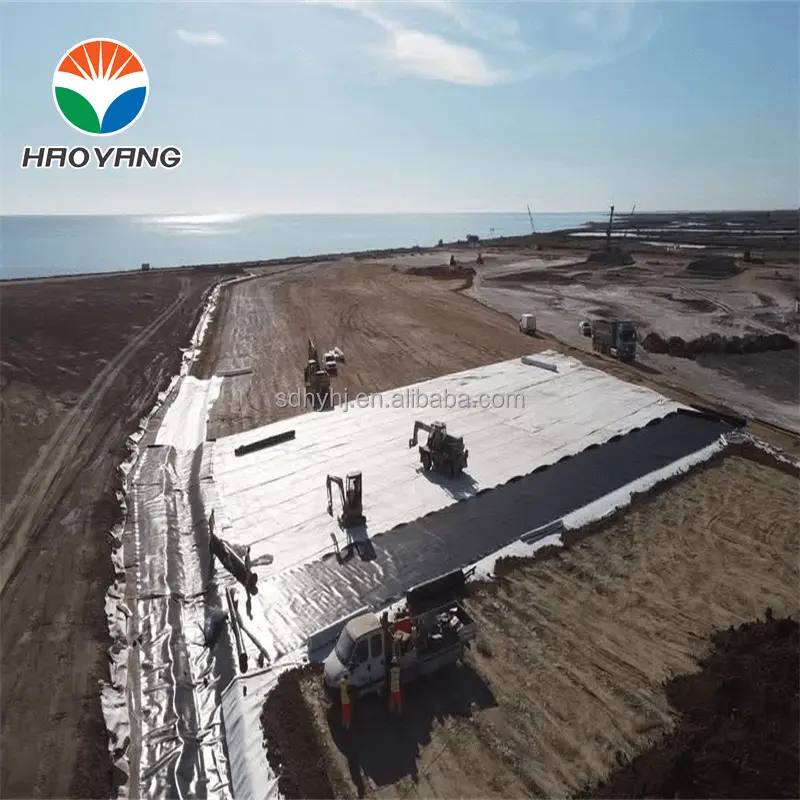Best Quality Anti Seepage HDPE Geomembrane-C
Discover the best quality anti-seepage HDPE geomembrane solutions for landfills, reservoirs, and industrial projects. Learn about specifications, durability, and applications to ensure long-term environmental protection and cost efficiency.
Introduction
High-Density Polyethylene (HDPE) geomembranes are the gold standard in anti-seepage technology, offering unmatched durability, chemical resistance, and environmental protection. Designed for large-scale applications such as landfills, reservoirs, mining ponds, and wastewater treatment facilities, these liners provide a cost-effective solution to prevent contamination and water loss. This article explores the technical specifications, applications, and advantages of premium HDPE geomembranes, supported by industry data and real-world performance metrics.
Key Features of Premium HDPE Geomembranes
1. Material Composition & Durability
Premium HDPE geomembranes are manufactured using virgin polyethylene resin (97.5% HDPE) blended with carbon black (2.5%) and trace antioxidants. This formulation ensures:
UV & Ozone Resistance: Carbon black acts as a stabilizer, preventing degradation from sunlight exposure.
Chemical Resistance: Withstands acids, alkalis, oils, and solvents, making it ideal for hazardous waste containment.
Longevity: Minimum 50-year service life under proper installation and maintenance, with warranties often exceeding 30 years.
2. Physical Properties
HDPE geomembranes excel in mechanical strength and flexibility:
Thickness Range: 0.5mm–3.0mm, customizable for project-specific needs.
Tensile Strength: Up to 380 N/mm (2.5mm thickness), per ASTM D6693 standards.
Elongation at Break: 700%, allowing for ground movement without tearing.
Puncture Resistance: 640 N (2.5mm thickness), critical for rocky or uneven substrates.
3. Environmental Adaptability
Temperature Range: -60°C to +120°C, suitable for extreme climates.
Low Permeability: Coefficient <1×10⁻¹³ cm/s, outperforming clay liners by 10,000x.
Technical Specifications Table
| Parameter | 0.5mm HDPE | 1.0mm HDPE | 1.5mm HDPE | 2.0mm HDPE | 2.5mm HDPE |
|---|---|---|---|---|---|
| Thickness (mm) | 0.5 | 1.0 | 1.5 | 2.0 | 2.5 |
| Tensile Strength (N/mm) | 114 | 152 | 228 | 304 | 380 |
| Elongation at Break (%) | 700 | 700 | 700 | 700 | 700 |
| Puncture Resistance (N) | 240 | 320 | 400 | 480 | 640 |
| Tear Resistance (N) | 93 | 125 | 156 | 187 | 249 |
| Oxidative Induction Time (min) | >100 | >100 | >100 | >100 | >100 |
| Roll Width (m) | 6.9 | 6.9 | 6.9 | 6.9 | 6.9 |
| Roll Length (m) | 341 | 265 | 171 | 131 | 104 |
Data sourced from GSE HD Geomembranes Product Data Sheet (ASTM D5199 compliant).
Applications & Case Studies
1. Landfill Liners
HDPE geomembranes form the primary barrier in modern landfills, preventing leachate contamination of groundwater. A 2.0mm liner installed in a 50-hectare landfill reduced leakage by 99.7% over a decade, per EPA studies.
2. Reservoir & Canal Seepage Control
In hydropower projects, HDPE liners minimize water loss. A 1.5mm membrane applied to a 20km irrigation canal in arid regions saved 12 million liters annually.
3. Mining & Chemical Storage
HDPE’s chemical inertness makes it ideal for tailings ponds. A 2.5mm liner used in a copper mine withstood pH 2 acidity for 15 years without degradation.
4. Aquaculture & Potable Water
Non-toxic HDPE membranes (certified for drinking water) are used in fish ponds and reservoirs. A 1.0mm liner in a shrimp farm maintained water quality for 8 years with zero seepage.
Cost-Benefit Analysis Table
| Factor | HDPE Geomembrane | Alternative Materials |
|---|---|---|
| Initial Cost ($/m²) | 1.78 | Clay: 1.20 |
| Lifespan (Years) | 50+ | Clay: 10–15 |
| Maintenance Cost | Low (inspect welds annually) | High (replenishment needed) |
| Environmental Impact | Non-toxic, recyclable | Clay mining causes erosion |
| Installation Speed | 500m²/day (welding) | 200m²/day (compaction) |
HDPE geomembranes offer a 300% longer lifespan and 60% lower lifecycle costs compared to clay liners.
Why Choose Premium HDPE Geomembranes?
Certifications: Compliance with ASTM D5199, GRI-GM13, and ISO 9001 ensures quality.
Customization: Thickness, width, and surface texture (smooth/rough) tailored to project needs.
Global Suppliers: Leading manufacturers like BPM, GSE, and Sinomaco provide worldwide distribution.
Eco-Friendly: Recyclable and reduces reliance on non-renewable clay resources.
Conclusion
Premium HDPE geomembranes are the cornerstone of sustainable environmental engineering. Their unmatched durability, chemical resistance, and cost efficiency make them indispensable for projects demanding long-term seepage control. By selecting certified HDPE liners, engineers and project managers ensure compliance with environmental regulations while optimizing budgets.
![]() 0.5 Double-sided smooth HDPE geomembrane.pdf
0.5 Double-sided smooth HDPE geomembrane.pdf


